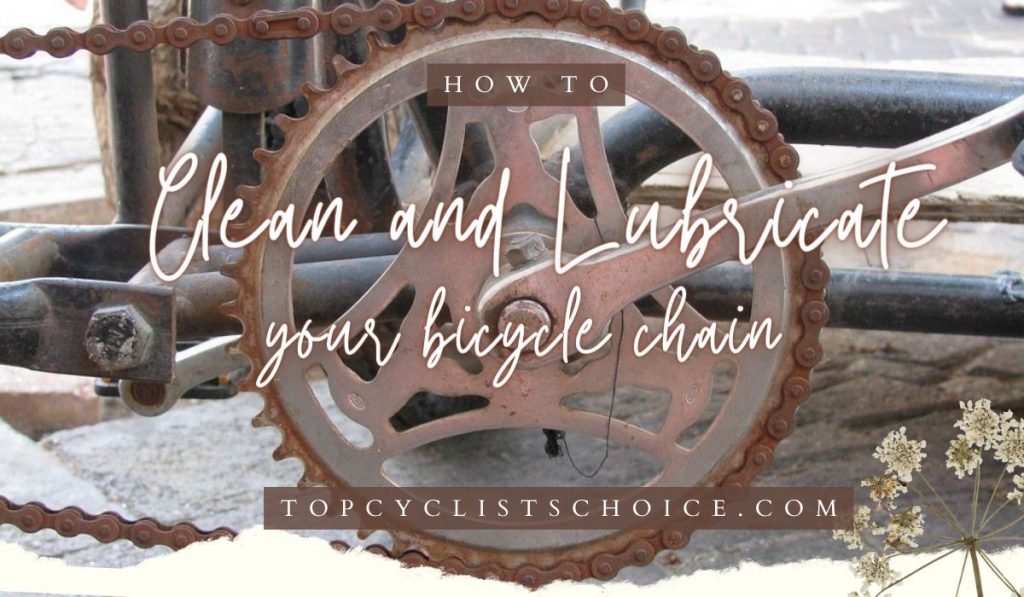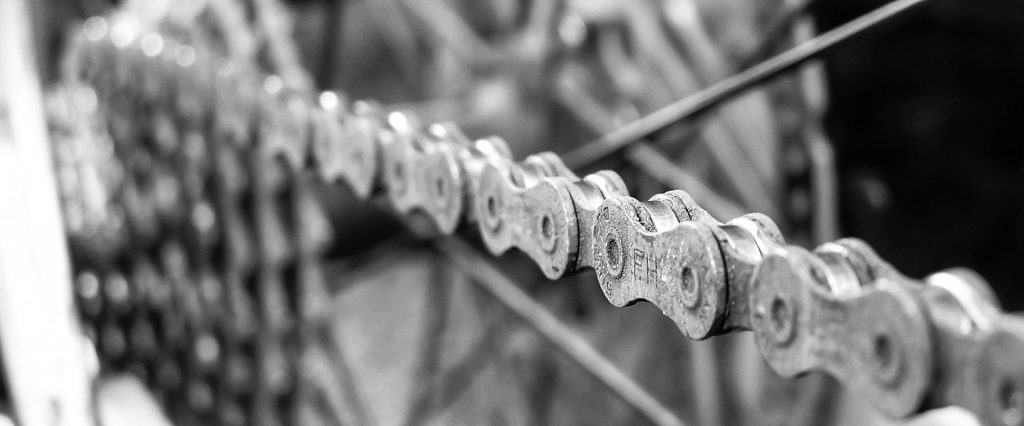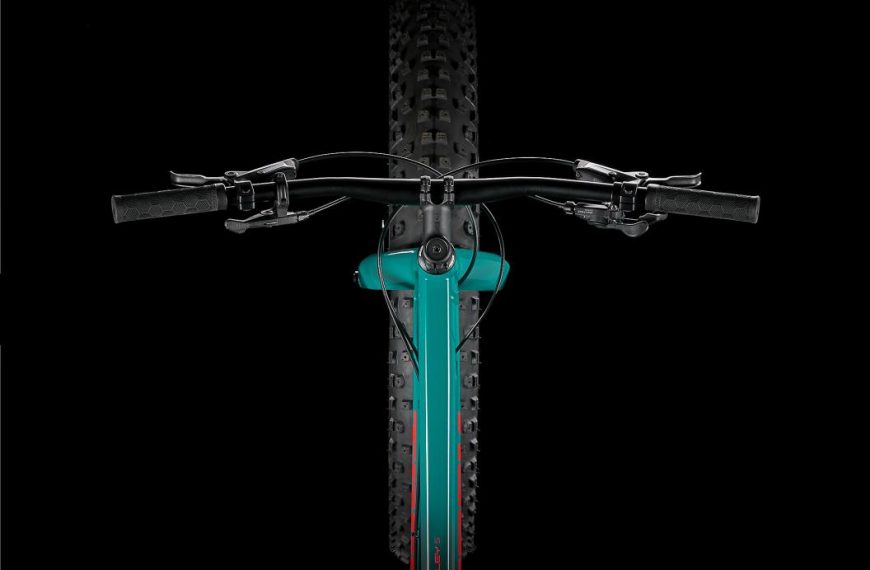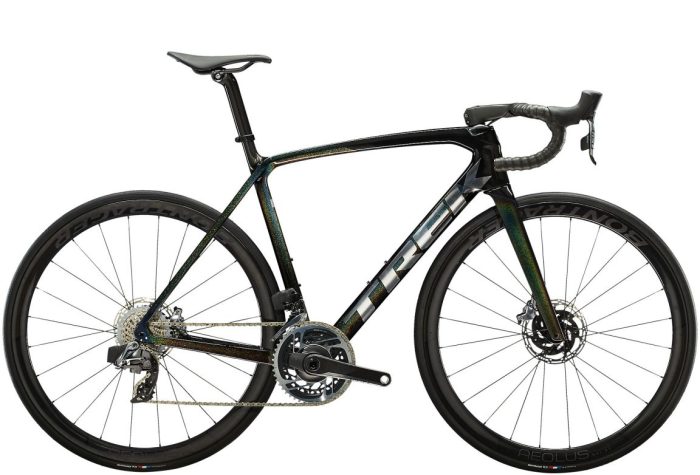How to clean and perform best bicycle chain lube for longevity
Bicycle Chain Lube: The dirtiest portions of your bike are usually the chain and drivetrain, and this dirt is harmful for the bike’s durability and performance. Specifically:
increased chain wear rate
Chain link flexibility has been reduced.
increased abrasion on drivetrain cogs and derailleur assemblies.
decreased shifting efficiency.
You can maintain a clean-running bicycle with the help of this article.
Bike lubricant is sometimes seen as an unattractive need to keep moving parts moving. However, for enthusiasts, it goes beyond its practical use and transforms into the high-quality, bike-maintenance equivalent of a great wine.
Regardless of whether you choose a cheap alternative or the best one you can find, your ride will come to a grinding halt if the wrong lubrication isn’t applied where it needs to be. Here’s how to grease your bike’s other moving parts and utilize bicycle chain lube.
Table of Content
Below are Top Ten list of items we selected after careful study and in-depth assessment:
- How often you need to have bicycle chain lube
- How long will it take to clean and lubricate bicycle?
- Common things you need to Clean and Bicycle Chain Lube
- Most important components to clean and lubricate?
- What to look for in a lubricant?
- Common Bicycle Clean and Lubricate FAQs

How often you need to have bicycle chain lube?
Regular: Bicycle Chain lube
Regularly lift the back wheel of your bike off the ground while standing to the side of it to inspect the entire chain. Rotate the nearest pedal carefully with your free hand while checking each chain link for rust, dirt buildup, and/or tight links (links that do not bend easily as they pass through the rear derailleur). While you’re riding, listen for squeaks to make sure the lubricant is sufficient. Both of these conditions require at least a spot cleaning on your chain.
Occasional: Bicycle Chain lube
Use a chain-removal tool to completely remove your chain approximately once every few months (more frequently for mountain bikes). To get rid of accumulated grime that brushing can’t remove, give it a thorough scrubbing and totally submerge it in a chain solvent. Let the chain soak until the links and bushings are mostly free of debris. Using a fresh rag, dry the entire chain. Verify that all of the solvent has evaporated before re-lubricating and re-installing the chain.
How long will it take to Clean and Bicycle Chain Lube?
Plan on taking 30 minutes, taking into account the time it will take your chain to dry between rinsing the degreaser off and putting the lube on.
Common things you need to clean and lubricate your bicycle:
Degreasing agent: The majority of degreasers on the market will successfully remove the dirt and used oil from your chain.
Plastic squeeze bottle: Squeezing degreaser out of a plastic condiment bottle is simpler than pouring it directly from the container.
A few tidy cloths Old T-shirts cut into large squares work well.
To rinse off the degreaser and any lingering filth, you’ll need a hose or pail of water and a sponge.
Any decent chain lubricant.
These items can easily be purchased via Amazon or from your local Walmart
Most important components to clean and lubricate?
Bicycle Chain Lube
A bicycle chain would screech incessantly and won’t move smoothly without proper lubrication. It will eventually rust, and it might break mid-ride.
Use any reliable degreaser to soak a clean rag. As you backpedal to clean the rollers and side plates while your bike is on a work stand, grab the chain with the rag. Continue until the chain is entirely clean. Then, using a new rag and the same cleaning procedure, dry the chain. Apply a drop of bike chain lube to the top of each link and carefully backpedal for a few rotations to give the grease time to seep in. Remove any extra oil; if you don’t, it may draw additional dirt to your chain. Use a thin, water-resistant lubricant.

Watch for Chain Stretch
Chains lengthen as they deteriorate. Stretch is the term used to describe this, but nothing actually stretches. Chains become longer when the link pins and rollers wear down. This results in slop or free play, which occasionally causes gears to “skip.” Your chain rings and back cog teeth experience more wear and strain as a result.
Bicycle Clipless Padels
Engagement and disengagement will not be as smooth as they should be without lubrication, and it could be difficult to take the pedals off your bike.
Apply a drop of lubrication oil every few rides to your clipless pedal system’s visible spring if it has one to prevent rusting and to keep it functioning properly. When installing pedals, lubricate the threads so that when you want to remove them later, they will actually move.
All Bicycle Cables
Cables will not slide through housings as smoothly without lubrication, which will have a negative impact on shifting performance. They will also be more susceptible to rusting in moist environments.
To clean and lubricate the cables including brake cables. Put the rear derailleur in the largest/easiest gear. Click your shifter to upshift to the toughest gear or smallest cog without peddling. This will produce some good cable slack and, on some bikes, enable you to remove the housing from the slotted cable stops and thoroughly coat the cables. Put a few drops of lubricant on your fingertips, then move them along the cable’s length until a thin film forms on it. Clean the dirt from your wires, being particularly careful to clean the area where the cables pass through the cable guide under the bottom bracket.
Bicycle Derailleur Pulleys
The pulleys will not move freely without proper lubricating, and you will go crazy trying to figure out what’s making that unpleasant squeak.
Use a clean rag and degreaser to remove any accumulated filth from your derailleur pulleys. Next, drop a tiny amount of oil onto the pulley’s center bearings. Backpedal a few times, then wipe out any lubricant that missed the bearings with a fresh rag. Use with caution because it can get messy.
What to look for in a lubricant for your Bicycle Chain Lube?
Every chain lubricant has two essential qualities.
Keep dirt from building up as much as possible since dirt hastens wear.
Be tough because chain wear is also accelerated by lubrication deficiency.
Durability is less of an issue because you should and can frequently lubricate your chain. Bicycle-specific oils are preferable to non-specific products in terms of chain lubrication. They are made to repel water and dirt and typically contain Teflon®.
Common FAQs for Cleaning and Bicycle Chain Lube
FAQs
What can I use as a lubricant for my bike chain?
The suggested lubrication substitutes for your bike chain include Chainsaw oil, Silicone Spray, Clipper Oil, and 3-in-1 Oil. Overly thick oils must be avoided. As alternatives to lubricants, cooking oil, coconut oil, olive oil, and petroleum jelly should all be avoided.
is it OK to use WD-40 on bike chain?
WD-40 is a fantastic water-based chain lubricant for bicycles that not only lubricates the chain excellently but also prevents rust and corrosion. Additionally, it lessens the buildup of filth, which lessens the chain’s wear and strain.
How do you lubricate a bike chain at home?
Step-by-step guidelines
Clean off your chain.
If you don’t have a particular tool, degrease your chain with a brush.
To remove extra degreaser, wash your chain with soapy water and then rinse it.
Select your lubricant.
lubricate the chain.
You’re ready to ride once you remove any extra lubrication.
Can I use olive oil on bike chain?
You can apply olive oil on your bicycle chain because it’s preferable to have some oil than none at all. This, however, might only work temporarily. Olive oil won’t do anything for your bike’s chain if you’re planning something significant.
What is the alternative to chain lube?
Some lubricant choices will actually cause the lubricants to degrade. So, in addition to brand-name bike chain lubricant, the most popular choices are olive oil, home greases, and cooking oil. The important factor is that all of them are simple to access at home.
Is silicone spray good for bike chains?
Yes. However, using it on chains is not the best option. It quickly washes away, leaving your chain lubricated but unprotected. It would function in an emergency, but a light oil or product created especially for the application will function much better and last much longer.
How often should I oil my bike chain?
If you commute frequently by bicycle, you should lubricate your chain at least once each month, or every 150–200 kilometers (240-320 kms). This time frame can range from a few days to a month, depending on the circumstances in which you ride your bike and the kind of chain lubricant you employ.
Can I lube my chain without cleaning?
No, you don’t. Lubricating the chain without first cleaning it is not advised. The chain can be cleaned with diesel or gasoline, then rubbed with a dry cloth while you wait for the chain to dry before lubricating it.
Can I use engine oil as chain lube?
For a variety of reasons, engine oil cannot be utilized as chain lubricant. Even if it might work for a while, it will eventually lead to issues. The viscosity of engine oils comes in first. The thickness of the oil will cause the chains to accumulate more grime.
Should I wax my bike chain?
If the chain starts to sound dry or squeaky, it is clear that it needs to be re-waxed. If you ride in the rain, the chain needs to be re-waxed (or at the very least cleaned and dried) right away to avoid rust.
How do I know if my bike chain needs oil?
When determining whether a chain needs lubrication, sound (grinding, creaking, screeching, or shrieking) is more trustworthy than appearance, time, or distance.
Contact Us
If you have any suggestions or advise, please feel free to reach us via our Contact Us here.
Our articles are developed after considerable research and studies online and also including seeking informational experience based tips from professional rides. Key sources of information are interviews, google search and youtube.



